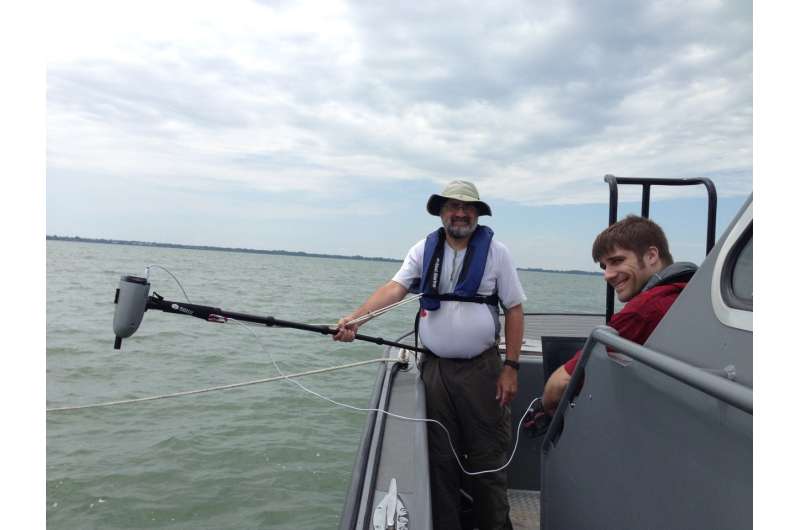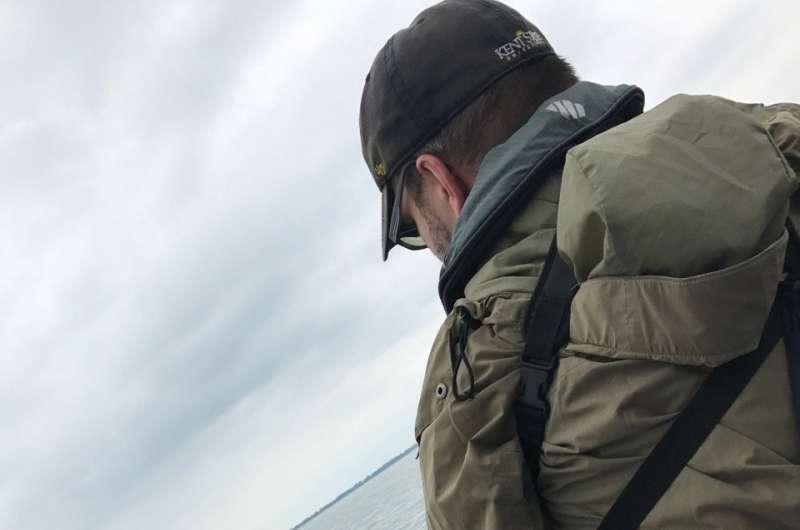Improving Lake Erie's water quality

The conditions in Lake Erie continue to pose several health risks to Ohioans in coastal communities, making it difficult to maintain good water quality for citizens, state and local policymakers.
A recent publication in Frontiers in Marine Science shows how researchers in the Great Lakes region are working toward innovative solutions. John Lekki, Ph.D., NASA Glenn Research Center's principal investigator, in collaboration with co-investigators from local universities including Kent State University won a NASA water quality proposal in June 2017. This recent grant offers an opportunity to implement Kent State's approach to identifying harmful algal blooms in and around Lake Erie.
Joseph Ortiz, Ph.D., a professor of geology in Kent State's College of Arts and Sciences, is a seasoned veteran at studying the problems posed by cyanobacterial harmful algal blooms (cyanoHABs) that have plagued Lake Erie towns and cities for years. Dr. Ortiz is the lead author of the journal article titled "Intercomparison of Approaches to the Empirical Line Method for Vicarious Hyperspectral Reflectance Calibration" published recently. Dr. Ortiz is a co-investigator on the grant from NASA that will allow him and his colleagues at several institutions in Ohio and Michigan to apply what they have learned from studying Lake Erie's waters. This is part of a large collaborative study, which covers the waters of the western basin of Lake Erie from Maumee Bay to the Detroit Plume and Sandusky Bay.
Blue-green algae, scientifically known as cyanobacteria, are common to freshwater systems like lakes and streams. Under certain conditions, they can produce highly potent cyanotoxins like microcystin, which attacks the liver and blood. When blue-green algae grow unchecked, some of these cyanobacteria can produce cyanoHABs. It was these toxic cyanobacteria that overran the western end of Lake Erie and parts of the Maumee River in 2014. This caused the mass contamination of Toledo's drinking water.

Since then, scientists including Dr. Ortiz have focused on how they can isolate the toxic cyanobacterial signal by using a hyperspectral imager to more closely monitor its growth and movement. This will more accurately target water treatment efforts aimed at reducing the impact of these cyanobacteria.
Dr. Ortiz's approach is based on the fact that color-producing agents in the water have different absorption and scattering effects on light.
"Any material that absorbs or scatters light is going to produce a reflective spectrum that is indicative of what is present, although multiple signals are often present that need to be unmixed," Dr. Ortiz said. "Our new paper demonstrates that the spectral decomposition method is relatively insensitive to the type of atmospheric correction method applied, and it separates out that noise - atmospheric errors - to give us a cleaner signal. We can then compare these unmixed spectra to the pigments in our library of water and sediment samples. The comparison to known pigments helps us determine what's in the water."
Dr. Ortiz said NASA Glenn's hyperspectral instrumentation and the bio-optical expertise that developed the instrument are key tools that bring the team together. Used in this way, the NASA device measures the wavelengths of light reflecting from the water as well as the downwelling sunlight that illuminates the scene.
"That information is necessary to correct the data from the instrument and allows us to reduce errors related to differences in measurement timing," Dr. Ortiz said.
More information: Joseph D. Ortiz et al, Intercomparison of Approaches to the Empirical Line Method for Vicarious Hyperspectral Reflectance Calibration, Frontiers in Marine Science (2017). DOI: 10.3389/fmars.2017.00296
Provided by Kent State University

















